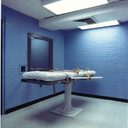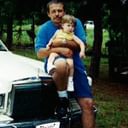
Arizona death-row prisoner Barry Jones (pictured) has said for the twenty-three years he has been on death row that he never raped or murdered his girlfriend’s 4‑year-old daughter, Rachel Gray. In a pair of recent articles for The Intercept, reporter Liliana Segura describes the inconsistent medical testimony, police “tunnel vision,” inept defense lawyering, and other “hallmarks of wrongful convictions” that led to a federal court evidentiary hearing last Fall that could overturn Jones’s 1995 rape and murder conviction and death sentence and potentially set him free. Rachel died of peritonitis, an inflammation of her inner abdomen caused by an injury she sustained that had ruptured her small intestine. At Jones’ trial, Dr. John Howard, the local medical examiner who conducted the autopsy, testified that the injury that caused her death had occurred about 12 hours before she died, at a time she was known to have been with Jones. However, when Howard later testified at the trial of Rachel’s mother, he provided a self-contradictory opinion that suited the prosecution’s case against her, asserting that the injury had likely occurred at least 24 hours before Rachel’s death. Although the defense had contacted an independent pathologist — Dr. Phillip Keen — in 1994 to review the autopsy findings, Jones’s lawyers never sent Keen images of the tissue slides or other evidence necessary to determine when the fatal injury occurred. The defense lawyers — and the police — failed to investigate evidence pointing to other suspects, including evidence that Rachel had been physically abused by her mother and bullied by a young boy who had pushed her and hit her in the stomach with a metal bar a few days before her death — exactly the type of injury that could have caused peritonitis. Further, there was no physical evidence suggesting that Rachel had been raped at the time she sustained the fatal abdominal injury. Rather, the evidence suggested that Rachel may have been sexually abused by a prior boyfriend of her mother, well before Jones became involved with the family. Jones’s lawyers failed to call any expert witness at trial, and the only witness he presented was Jones’s 12-year-old daughter. The prosecution also presented suspect eyewitness identification from two children who testified to having seen a man fitting Jones’ description hitting a young girl in a van. Police, however, had questioned the two children in the presence of their mother, who had prompted some of their responses, and had failed to follow standard practices to avoid eliciting false memories. Jones’s case has similarities to a number of other death-penalty cases in which defendants were wrongly convicted of murdering children. Sabrina Butler was wrongfully convicted and sentenced to death in Mississippi in 1990 when a local medical examiner testified that she had suffocated her nine-month-old son. Butler was exonerated in 1995 after medical evidence suggested that her baby died either of cystic kidney disease or from sudden infant death syndrome (SIDS). Rodricus Crawford was wrongly convicted and sentenced to death after a local doctor claimed he had suffocated his infant son. He won a new trial as a result of unrelated prosecutorial misconduct, and was exonerated in 2017 after national experts presented affidavits saying the autopsy results showed his baby had died from bronchopneumonia and sepsis. And Ha’im Al Matin Sharif was released from Nevada’s death row in 2017, nearly 30 years after he was convicted of killing his girlfriend’s 11-month-old daughter, after medical evidence revealed that the baby died from infantile scurvy, rather than from physical abuse. Oral argument for Jones’s case is scheduled in federal court on March 2.
(Liliana Segura, Tunnel Vision, The Intercept, February 9, 2018; Liliana Segura, What Happened to Rachel Gray?, The Intercept, October 23, 2017.) See Innocence.


